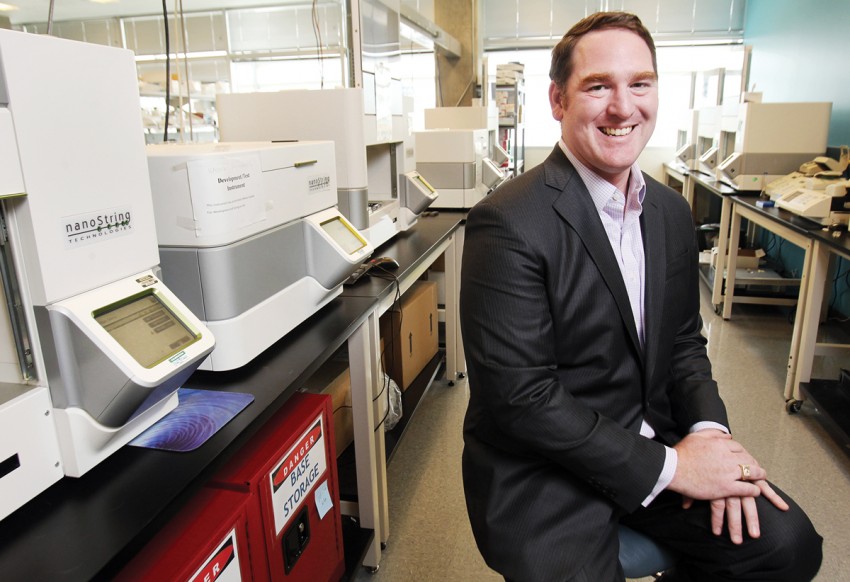Football Standout Tackles Tumors with Precision
-
-
slice.mit.edu
Filed Under
Recommended

In 1998, Brad Gray '98 told The Tech he’d like to start a pharmaceutical company. Back then, he was a senior and the Division III National Football Foundation and College Hall of Fame Scholar Athlete of the Year. Today Gray is the CEO of NanoString Technologies, a Seattle-based precision medicine company that he joined in 2010. “We manufacture products that extract biological information from tumors for personalized treatment,” he says.
A South Carolina native, Gray majored in chemical engineering, lived at Lambda Chi Alpha, and played defensive tackle at MIT. In UROP labs, he helped manufacture genetically engineered protein-therapy drugs in bioreactors; in the summers, he interned with alumni at drug companies. He was at a barbecue when he had an epiphany.
He’d spent months trying to lower the cost of manufacturing Merck’s chicken pox vaccine by 10 percent when an alumni mentor pointed out that the company already sold that vaccine for 10 times what it cost to make. “In many industries, a 10 percent cost reduction would be huge; this industry doesn’t seem focused on the cost of manufacturing,” Gray recalls thinking. To make an impact, he’d have to find a way to add value instead. “That was a serendipitous but important conversation to have, and I never would have had it without the opportunity to do undergraduate research and get great internships via alumni networks.”
To figure out how to disrupt the drug business, Gray went to Oxford on a Marshall Scholarship, earning a second bachelor’s degree in economics and management.
For four years, he worked as a management consultant in McKinsey’s health care practice; then he spent five years at Kendall Square biotech pioneer Genzyme. In 2010 he moved his young family to Seattle and became CEO of NanoString. Instead of using precious tumor tissue in multiple tests, NanoString’s technology takes one sample of a tumor and reads its DNA, RNA, and protein fingerprints. This molecular-level information is used to determine the best treatment drug. “Mrs. Smith and Mrs. Jones can both have breast cancer, but they’re very different,” Gray explains. NanoString partners with Celgene, Medivation, and Merck.
Gray has expanded NanoString from 55 to 350 employees. He took it public in 2013, and he expects to see $86 million to $90 million in revenue this year. Puget Sound Business Journal named Gray to its 2014 “40 Under 40” list. “We’re at the forefront of how we personalize cancer treatments, and that’s amazing,” he says. “I feel very fortunate.”
This article originally appeared in the September/October 2016 issue of MIT Technology Review magazine.







